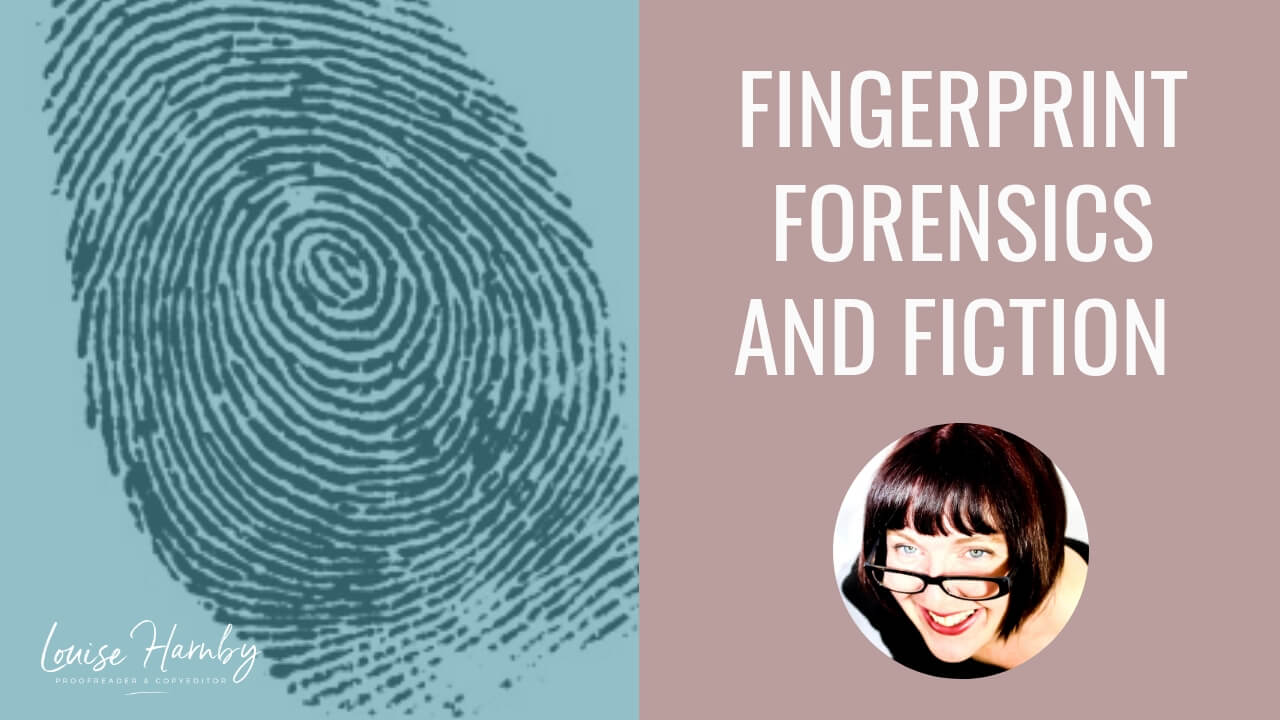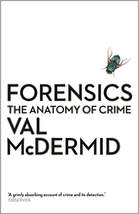|
If you’re including fingerprint science in your fiction writing, these tips will help you get the basics right.
Fingerprints are an established part of forensic procedure. If they’re in your novel, you’ll need to think about the science, the degree to which you’ll stay true to reality, and how much detail to include without turning your fiction into a textbook.
Here are 9 tips to get you started. 1. Know how a fingerprint is formed In ‘Introduction to Forensic Science’, Penny Haddrill describes fingerprints as follows:
‘On our fingers and toes there are many fine ridges. These ridges form recognisable patterns and are formed during the gestation period of the foetus during pregnancy. Fingerprints are produced from the contact between the ridges present on our fingers and a surface. The transfer is achieved by the deposition of the secretions from our glands associated with the ridges on our skin or by contaminants present on the finger surface.’
2. Know your terminology If you’re seeking authenticity, the terminology you use will be determined by where your novel’s investigators are based. If your fiction is set in the UK at least, ‘fingerprint’ and ‘fingermark’ mean different things:
3. Categorize your fingermarks correctly In Explore Forensics, Jack Claridge offers three categories of mark (though, again, in your novel’s jurisdiction, these might be referred to as prints):
4. Understand where the science wobbles It is believed that no two fingerprints are alike but there is no empirical evidence to prove this. While it’s true that, to date, identical fingerprint matches have not been found, there are enough similar ‘matching points’ between two people’s prints such that false positives and negatives have occurred. Says Laura Spinney in Nature:
‘Fingerprint analysis is fundamentally subjective. Examiners often have to work with incomplete or distorted prints — where a finger slid across a surface, for example — and they have to select the relevant features from what is available. What is judged relevant therefore changes from case to case and examiner to examiner.'
You might want to bear this in mind when your characters are doing or talking about fingerprint uniqueness. 5. Get the twin stuff right Identical twins have almost identical DNA because they develop from one zygote (created by one egg and one sperm) that splits into two embryos. Fingerprints, however, are formed during foetal development. Here's Spinney again:
‘The ridges and furrows on any given fingertip develop in the womb, [and are] shaped by such a complex combination of genetic and environmental factors that not even identical twins share prints.’
With that in mind, don’t make the mistake of hanging your plot on murderous monozygotic mayhem created by a couple of trickster twins. Their DNA might be an almost perfect match, but their paw prints won’t be. 6. Acknowledge real-world procedure and bias The Centre for Forensic Science identifies four separate stages in the methodology of fingermark collection: ACE-V.
In Forensics, Val McDermid discusses a miscarriage of justice that occurred because of flawed procedure (pp. 134–7). A partial fingermark left at the scene of a horrific bombing in Madrid in 2004 was analysed in comparison with a suspect’s fingerprints. In other words, the A and C were not separate procedures. The examiner went looking for points of similarity rather than taking into account the differences, even though only a partial fingermark was available. This introduced unacceptable bias and led to erroneous findings. She summarizes the FBI’s later conclusions:
Does this mean you can’t have flawed procedure in your novel? Not at all – it could be a great plot point. Just bear in mind that the issue of bias is on the agenda for the forensics community internationally. Read ‘A Review of the FBI’s Handling of the Brandon Mayfield Case’ in its entirety if you want more insights into the challenges of fingerprint forensics. Furthermore, many police forces are having to endure budget cuts. Stretched resources can lead to corner-cutting. How might that affect your story? 7. Familiarize yourself with processing and enhancement Latent fingermarks are currently processed using the following techniques. To find out more, read Dr Chris Lennard’s paper, ‘The detection and enhancement of latent fingerprints’, presented at the 13th INTERPOL Forensic Science Symposium.
Exemplar fingerprints – those taken directly from an individual in controlled circumstances – are captured via two methods:
Read about how two law-enforcement organizations – one in the UK and one in the US – use ink and scanning technology here:
8. Use the right fingerprint databases Images of fingermarks extracted from a crime scene can be uploaded to databases containing both fingerprints (and other biometrics) of known individuals and fingermarks that have yet to be identified. The main fingerprint databases are:
9. Decide how far to bend the rules Do you need to worry about any of this? After all, it’s fiction! It depends on the subgenre of your writing, and how your readers are likely to respond to deviations from reality. If your novel is set in an alternative world or in the future, you can play it however you want. If, however, you’re writing a realistic procedural, you could alienate sticklers if you get it wrong, especially those who are police officers, forensic scientists, scene-of-crime officers, and fingerprint examiners. TV shows like Silent Witness and CSI offer audiences a single viewpoint. Most viewers accept that the real world involves more complex investigations with many more players. Books, like TV shows, entertain us, so readers too will indulge writers who bend the rules to a degree. Even if you don’t want to go for maximum authenticity, consider sprinkling your narrative with factual information that grounds your investigation just enough to head off those whose fingers are hovering over the one-star button in Amazon’s review pane! Further reading and related resources
Louise Harnby is a line editor, copyeditor and proofreader who specializes in working with crime, mystery, suspense and thriller writers.
She is an Advanced Professional Member of the Chartered Institute of Editing and Proofreading (CIEP), a member of ACES, a Partner Member of The Alliance of Independent Authors (ALLi), and co-hosts The Editing Podcast.
4 Comments
22/5/2019 04:10:09 pm
In 20+ years of investigating crimes, never once did fingerprints solve or even help convict the guilty party. But in every crime I worked, I always took them. The one time I didn't would have been the one time they would have cracked the case.
Reply
Louise Harnby
22/5/2019 06:47:33 pm
That's really interesting, William. I love the idea of sitting down with a detective to make sure the procedurals are in order!
Reply
Lindsey Russell
22/5/2019 11:41:40 pm
Excellent article - again. Lots of helpful info - including what NOT to do! Going to have to work my way through the 'further reading' - have got Val McD's 'Forensics' but house sale (which took ages) and subsequent move meant it got boxed up soon after purchase as I had thousands of books to box so as yet is unread. I'm working on a cosy crime and fingerprints do figure prominently but because it is not a 'procedural' haven't gone into the technicalities just described what items the police test (scent bottles, hairspray canisters, paper) and what the results are.
Reply
5/6/2019 12:16:09 pm
Excellent post Louise. Strange to read William's comments, as in the UK, I have found fingerprints helping to solve many cases and ultimately assist in as many convictions.
Reply
Leave a Reply. |
BLOG ALERTSIf you'd like me to email you when a new blog post is available, sign up for blog alerts!
TESTIMONIALSDare Rogers'Louise uses her expertise to hone a story until it's razor sharp, while still allowing the author’s voice to remain dominant.'Jeff Carson'I wholeheartedly recommend her services ... Just don’t hire her when I need her.'J B Turner'Sincere thanks for a beautiful and elegant piece of work. First class.'Ayshe Gemedzhy'What makes her stand out and shine is her ability to immerse herself in your story.'Salt Publishing'A million thanks – your mark-up is perfect, as always.'CATEGORIES
All
ARCHIVES
July 2024
|
|
|
|


















 RSS Feed
RSS Feed





